#Şehzade Ahmed
Explore tagged Tumblr posts
Text



This golden kaftan was first worn by Şehzade Ahmed in the third episode of the second season of Magnificent Century: Kösem. It was worn again by Şehzade Mehmed (later Sultan Mehmed IV) in the penultimate episode of the same season.
The kaftan appeared again on Arda Tatlıdilli in the twenty-sixth episode of the first season of Tozkoparan İskender.
#Muhteşem Yüzyıl: Kösem#Magnificent Century Kösem#Magnificent Century Kosem#Tozkoparan İskender#period drama#costume drama#historical drama#Şehzade Ahmed#Sehzade Ahmed#Şehzade Ahmed (Son of Ayşe)#Mehmed IV#Şehzade Mehmed#Sehzade Mehmed#Şehzade Mehmed (Son of Turhan)#Arda Tatlıdilli#Arda Talidilli#reused costumes#recycled costumes
7 notes
·
View notes
Text
Long Shall She Reign
A Muhtesem Yuzyil (Magnifcent Century) inspired HOTD fanfic
Warnings: This fic includes dubcon, pregnancy, childbirth, child loss, miscarriage, stillborn birth, character death, violence and inc3st(Targcest. Uncle/Niece), Underage Sex(mentioned), Brothels/Sex Workers Tags might be added as the fic goes on. Don't like, don't read.
Aemond Targaryen x Velaryon Strong!Reader (Aemond x Niece OC)

Face claim: Merve Boluğur
Nurisa Sultan(AFAB OC Strong! ) Also known as Princess Visenya Velaryon, Visenya Waters, Nurisa Hatun. Eventully known as: Her Grace the King's Mother, Valide Nurisa Sultan
**Info on Character and slight, minor(but essential) spoilers ahead
Backstory:
Born as Princess Visenya Velaryon, daughter of Princess Rhaenyra Targaryen and Ser Laenor Velaryon, twin to Prince Jacaerys Velaryon. Her dragon egg never hatched, nor did she ever have the opportunity to claim a dragon. As a result, she grew close to her half-uncle, Prince Aemond Targaryen, as they both shared the same predicament. Princess Visenya was a cherished part of King’s Landing during her early years, known to bring smiles to even the sternest members of the King’s Guard (except Ser Criston Cole, but his opinion was one that no one cared for, given he was a right c*nt. Despite the rumors surrounding her parentage, coupled with her lack of a dragon, she remained a carefree and intelligent child. It was said she mastered both Old Valyrian and Zarahani. That was, until the Driftmark Incident.
After leaving King’s Landing with her parents and siblings, she lived at Dragonstone until the funeral of her aunt, Lady Laena Velaryon. She attended the funeral as expected and retired that night to the chambers assigned to her. When her brothers and cousins woke her from her sleep to find her late mother’s dragon, she reluctantly joined them, slipping her dagger into her sleeve.
After the fateful encounter between her uncle, brothers, and cousins, her life was changed forever. Stripped of her title and name, she became Visenya Waters, disowned, and promptly sent to live in King’s Landing, all by Otto Hightower’s decree. But that was not the end of Visenya... not by a long shot.
At the age of eight, she was sent to a brothel. When she came of age, she entertained the advances of strangers and known men alike. Due to mysterious circumstances, she was captured, enslaved, and sold to the Sultanate of Zarahan. Entering the harem while pregnant and scarred, she was taken in by the Valide Sah Sultan. After giving birth to her son, Aethan, and later to Ayse Sultan and Şehzade Murad, while raising her stepson, Şehzade Bayezid, Nurisa climbed the ranks, eventually becoming the Haseki and Legal Wife of Sultan Ahmed. Through multiple trials and losses, the most significant being the death of her son, Aethan, and the deaths of her other children in the cradle or womb, along with the passing of the Valide and, eventually, Sultan Ahmed, Nurisa became Valide Sultan to her stepson, Bayezid, and amassed power and the love of the people. Now, with her children, Ayse and Murad, halfway across the world—in Westeros of all places—Nurisa is forced to return and confront the family who abandoned her.
She left Westeros a slave and a bastard, and returned as Valide-Kabir Naib-Sultanate Nurisa Sultan, Queen Mother and (former) Regent of Zarahan. Westeros, beware, for hell hath no fury like a woman scorned, especially not Nurisa.
For what is Nurisa to do when she discovers her son is alive? What is she to do when she finds herself in Westeros once more? What is she to do when she encounters a certain One-Eyed Prince?
What any sensible woman would do.
Revenge.
#hotd#hotd fanfic#hotd fandom#hotd oc#Velaryon Strong OC#aemond x niece#aemond targaryen x fem!oc#aemond targaryen x strong!oc#house targaryen#muhtesem yuzyil#or atleast muhtesem yuzyil inspired#Muhteşem Yüzyıl
23 notes
·
View notes
Note
hi dear! i just wanted to say i love your writing and that i'm really excited too see that you write for magnificent century as well, because no one does! i was wondering if you could write a quick little story about şehzade iskender (mc: kosem) and reader, the plot can be whatever you want it to, thank you so much for reading this! ❤️

Hello dear. I am so glad to hear that you liked it. You are right, there are not many articles for Magnificent century/Kösem. I will try to write as much as I can for these two series characters. I hope you like it.
You and Sehzade İskender met when you were very young. You were a young concubine who had just come to the palace and he was a boy who had just joined the Janissary Corps. As the years passed, you had become a real friend. However, after the first few years, İskender started to see you as more than a friend. He always dreamed of running away from the palace with you and starting a family with you. In fact, when you found out that he were a Prince, it was a big shock for both of you. At first, he did not want to be a Prince and fight for the throne. However, he started to think about the life he could provide you if he became a Prince and ascended to the throne. Soon, he started to plot with his mother Safiye Sultan and his sister Hümaşah Sultan. Safiye Sultan did not object to her son wanting you for himself. After all, she thought her son deserved everything. When you were chosen as Sultan Ahmed's concubine, he secretly took you away from the Palace. You started living in a secret mansion. You were afraid of what would happen next. You hoped that everything would end well.
#muhteşem yüzyıl kösem#magnificent century kösem#sehzade iskender#sehzade iskender x reader#historical characters#ottoman empire
19 notes
·
View notes
Note
I am really glad that you have answered my analysis of Ümmügülsüm Sultan as daughter of Ahmed I.
I have investigated Sultanas for 3 years for now and I want to share my findings about daughters of Bayezid II that are kinda new ones... I want to hear your comments.
------------------------------------
In work Şehzade Korkud (ca. 1468-1513) and the Articulation of Early 16th Century Ottoman Religious Identity on page 60 (note 43), it is said that İlaldı Sultan was said to be own sister of Selim I. Additionally, in work The marriage of Ibrahim Pasha on page 25, it is said that Ferhad Pasha and Ahmed Pasha were pashas from Selim’s household; one married his daughter and another his sister. Ahmed Pasha was on strong positions even through reign of Selim I, so... But, I think that he was not the first husband of İlaldı; as she was Selim’s sister, she must had been older than him and probably she got married when he was sent to province (1487) if not earlier.
There are multiple suggestions and claims of Sofu Fatma Sultan’s marriages. Öztuna claims that her first marriage was in 1482 to Mirza Mehmed Pasha (d. August 1517, who was remarried in 1513 to Şahnisa Sultan); Alderson in his tables claim that she was married in 1489 to son of Koca Davud Pasha, Mustafa Pasha (d. 1524), which J. Dumas also confirmed at the end of the 2013 book at page 477. She was married to Güzelce Hasan Bey at sometime, but in work Şehzade Korkud (ca. 1468-1513) and the Articulation of Early 16th Century Ottoman Religious Identity on page 55 (note 23) it is stongly claimed that in late 1504 she was still married to Hasan Bey, but in June she was reffered as former wife of Hasan Bey. In Dumas’s 2013 book, somewhere I have found that she says that she remarried after Hasan Bey to certain Ahmed Pasha, but I couldn’t find it now. If all these four marriages happened, if you ask me, at least in two cases marriage ended with a divorce.
In work Wolf on the Border: Yahyapaşaoğlu Bali Bey (?-1527) by Fodor, it is strongly claimed that gift records show Yahya Pasha was married in 1501/02 to Aynışah Sultan, and that Bali Pasha was her stepson who married her daughter in 1508. I strongly consider suggestion of historians that Aynışah was Şirin Hatun’s daughter FALSE. They consider her being buried beside her grandmother and father, although it is Şirin Hatun’s granddaughter Aynışah Sultan (who was buried there when she died in 1540). Aynışah Sultan was married in 1489 to her first cousin Ahmed Bey, who was 13 years old at the time. I consider Aynışah to be similar in age of her husband (thus being born in 1475/76), because if she was Abdullah’s own sister, she was born before 1464, which would mean she was twice as old as her husband, which is unimaginable to me.
Serbian historian Gliša Elezović claimed that Bayezid II’s daughter Hümaşah Sultan was remarried after death of her husband Bali Pasha to governor of Skopje Mustafa Pasha. Later, one of the historians made work about Çoban Mustafa Pasha, who was governor of Skopje during reign of Bayezid II and claims that he was Hümaşah’s second husband, and that after her death he remarried Selim I’s daughter Hafsa Sultan in 1517. With Hümaşah Sultan he had four daughters, see on second page: https://acikerisim.fsm.edu.tr/xmlui/bitstream/handle/11352/1785/%C4%B0brahimgil.pdf?sequence=1&isAllowed=y
Additionally, beside four daughters with Mustafa Pasha, Hümaşah Sultan had a son Hüseyinşah Bey, who died in 1566 and was from Karlizade family. Elezović also confirmed this, but also in work Journal of Turkish Studies 39 (2013), on page 248 this information is confirmed. But his father must have been from Karlizade family, and there was one of Bayezid II’s damads named Karlizade Mehmed Bey who was governor and still alive in 1511. In this document about provincial governors and damads of Bayezid II, he is reffered as II. Bayezid'in damatlarından Mehmed Bey bin Karlı'dır. Obviously, she divorced one of them…
In Fisher’s book The foreign relations of Turkey 1481-1512 we have two interesting informations; in 1481 there were recorded four sons-in-law of prince Bayezid (p. 17; note 33):
Hersekli Ahmed Pasha (Hundi Sultan lol); Sinan Pasha (Ayşe Sultan lol), Kasim aga-aga of the jannisaries and Rüstem pasha-janissary pasha. Are you able to find out what were names of wifes of other two pashas?
On page 93 of the same book:
It was not usual custom in Turkey to give daughters of the sultan to foreign princes, but Bayezid disregarded this usage and married two daughters outside the empire. One he had given to Amed Mirza of Persia, and now he cemented the friendship between Turkey and Egypt by sending a daughter to Cairo. This was in 1501, and the next year ambassadors were exchanged to discuss the affairs of Persia and the Syrian frontier.
In book Struggle for Domination in the Middle East by Shai Har-El (p. 215):
In 1501 Bayezid sent his daughter to marry the newly-enthroned Mamluk Sultan Kansu al-Gawri, thus confirming a peaceful relation between the two states. The following year, in the late 1502 Bayezid agreed to peace with Venice in order to free himself to deal with new problems emerging the East.
But, if you read Alderson’s tables (last note in tables of Bayezid II), he cites some source I couldn’t understand from Ulucay and says that this Sultana who married Kansuh was later accused of adultery. Nothing shocking to me as Kansuh al-Gawri was 60 years old at the time, and this Sultana was young. But I am dying to know what was her name. Could you be able to find out?
----------------------------------------------------------------
You’re welcome, it was a very interesting read :D
I have to tell you in advance that it’s been a long time since I studied anything different from the Sultanate of Women so I may make mistakes or I may not know well what we’re talking about. Please, bear with me.
It's going to be very long, I'm sorry
If you don’t mind, I’m going to summarise what you said:
According to Nabil Al-Tikriti in Şehzade Korkud (ca. 1468-1513) and the Articulation of Early 16th Century Ottoman Religious Identity (p. 60, n. 43), İlaldı Sultan was “said to have been Selim’s full sister”
She married Ahmed Ağa (> Hâin Ahmed Paşa), who came from Selim I’s household and was one of his favourites (According to Öztuna, he was executed in Cairo)
According to Uluçay she must have died around 1518 because she doesn’t figure among the princesses who received a stipend from Selim I on that date
Sofu Fatma Sultan: she married Güzelce Hasan Bey (m. before late february 1504-june or before june 1506) and had a daughter with him. She married Ahmed Bey bin Ali Bey bin Mesih Paşa (Uluçay, p. 49). Her son Mehmed Çelebi later married Ayse Sultan daughter of Şehzade Alemşah.
According to Uluçay (via Sakaoglu), it’s not true that she had married Mustafa Bey, son of Grand Vizier Davud PashaYou may be right that she had a previous husband before Güzelce Hasan Bey because according to Uluçay she only had a daughter with him. He didn’t know her son Mehmed Çelebi’s father but that seems to mean she had another husband. Still, according to Uluçay, Sofu Fatma Sultan was also the wife of Ahmed Bey bin Ali Bey bin Mesih Paşa but both Sakaoglu and Oztuna maintain that he was the husband of her daughter instead.
Yes, so, about Dumas’ dissertation… Her family trees were not made by her, she simply reported what Alderson or Uluçay said in their books, so they’re not exactly sources. It can be seen in the fact that she never attempts to identify the princesses she finds in harem registers. For example, in her dissertation she says that “Gevherhan” was a daughter of Murad III with a concubine of non-haseki status (in reality that Gevherhan is Gevherhan binti Selim II, who had a long life) but she didn’t put her in the family trees at the end.
Aynışah Sultan: she first married Akkoyunlu Damad Göde Ahmed Bey in 1490, the marriage lasted until 1497 (when Ahmed Bey was killed during an uprising in Azerbaijan, where he had gone earlier that year to reclaim the throne of his grandfather, Akkoyunlu ruler Uzun Hasan). With Ahmed Bey, Aynışah had two daughters, Hanzade and an unnamed daughter who married her cousin Şehzade Alaeddin, son of Şehzade Ahmed. According to Öztuna, she also had a son: Sultân-zâde Zeynel Mîrzâ Bey. She secondly married Malkoçoğlu Dâmâd Yahyâ Pasha at the turn of the century (or 1501/1502). At the time, Yahya Pasha already had seven sons: Bali, Mahmud, Mehmed, Sinan, Ahmed, İskender, and Mustafa, who were all adults when their father married into the imperial family. In 1508, Yahya Pasha’s eldest son Bali Bey married one of Aynışah’s daughters from her previous marriage. The marriage was unhappy because the princess had several affairs, and did not produce any legitimate issue.
Akkoyunlu Damad Göde Ahmed Bey was the son of Gevherhan Sultan binti Mehmed II and Dâmâd Uğurlu Mehmed Mirza/Pasha. He was born in 1476 and was therefore 14 yo when he married Aynışah.
Hüma/Hümaşah Sultan: she firstly married Dâmâd Antalyalı Balı Paşa around 1482. After his death in 1494, she married Çoban Mustafa Paşa with whom she had four daughters: Huma, Hani, Şahzeman, and Ümmi Hatun (according to Mehmet Z. İbrahimgil in Makedonya'da Gazi Mustafa Paşa'nın Vakıf Malları). After Hümaşah Sultan’s death (1504??), Çoban Mustafa Pasha married Selim I’s daughter Hafsa.
The marriages of Selim I’s daughters are a mess, to say the least, so I won’t get into it. Turan says “In 1517 Mustafa Pasha married the widow of Bostancıbaşı Iskender Pasha, whom Selim had executed in 1515”. Öztuna gives these husbands to Hafsa, though he didn’t identify the bostancıbaşı: “=1. Dâmâd Fülân Ağa, bostâncıbaşı, executed by Yavuz. =2. Dâmâd Gaazî Çoban Mustafa Paşa (executed 20.8.1523) b. İskender Paşa (ölm. 1506)” I could not find any of Elezović’s works so I don’t know which his sources were. Grygor Boykov in Karlizâde ‘Ali Bey: an Ottoman Dignitary’s Pious Endowment and the Emergence of the Town of Karlova in Central Bulgaria (which is the essay in the Journal of Turkish Studies you mentioned) gives this information:
Another relative, one Hüseyin Şah Bey, who is known to have been an offspring of the Ottoman princess Huma Şah Sultan and of a member of the Karlizâde family, built in 1553/1554 in the village of Saray (near Skopje) a mosque, medrese, and a bridge over the river Vardar. He was buried there in 1566/1567 in a highly monumental mausoleum that almost rivals in size the mosque.
without sources, unfortunately.
The essay you mentioned is İlhan Gök’s İnamat Defteri’ndeki Verilere Göre 16. Yüzyılın İlk Çeyreğinde Osmanlı Eyalet ve Sancak Yöneticileri, where he repeatedly says that Mehmed Bey bin Karlı was a damad of Bayezid II.
Do you think she married Mehmed Bey bin Karlı before Çoban Mustafa Pasha? This Mehmed Bey was governor of İlbasan from 23 July 1505 to 21 March 1507, governor of Alaiye from 9 March 1509 to 15 October 1509, and governor of Vulçıtrın from 6 July 1510 to 7 December 1511. If Hümaşah had only a son with him, Hüseyin Şah Bey, this marriage could have been a short one. On the other hand, the marriage with Çoban Mustafa Pasha must have been longer since they had 4 daughters.
About Fisher’s book:
Kasim, aga of the janissaries (DaLezze*,* p. 164*);* Rustem, janissary pasha (DaLezze, p. 179); Hersekoglu Ahmed, beylerbey of Rumelia (Spanduguino, p. 170; P. Giovio, "Informatione di Paulo Giovio vescovo di Nocera, a Carlo Quinto Imperatore Auguisto” in Dell’historia universale dell’origine et imperio de Turchi [Sansovino, ed], p. 218r); and Sinan, beylerbey of Anatolia (Hammer, III, 339) were all related to Bayezid by marriage.
“DaLezze” is the Historia Turchesca whose paternity is disputed, but Italian historians say it was not written by Donato Da Lezze. In any case, I don’t have it so I can’t read what he said about these men.
So, Mehmed II died in 1481, and this note refers to when Bayezid was trying to reach Istanbul before Cem so he could claim the throne for himself.
Oztuna, in Devletler ve Hanedanlar , lists the Janissaries commanders. Between 1451 and 1515 Mehmed II had abolished the commander of the Janissaries, leaving only the segbânbaşı, that is his deputy.
Hasan Ağa (1451-), 'Abdurrahmân Ağa, Balaban Ağa, Trabzonlu Mehmed Bey, Yâ'qûb Ağa (-1462), Ramazân Ağa, Karagöz Mehmed Ağa, Ibrâhîm Ağa (1485), a different Karagöz Ağa (1497), Yûnus Ağa (1502), Balyemez 'Osmân Ağa (-1515).
It’s Selim I (in 1515) who restored the commander of the Janissaries and gave him a seat in the Divan.
Anyway, if we believe Oztuna to be accurate, there are no Kasim or Rustem during these years. The first Rustem I encountered was “Güzelce Rüstem Ağa 1531-1533”, who was a damad according to Alderson (but his source is Fisher...).
I don’t know anything about a marriage between an Ottoman princess and Qansuh II al-Ghawri, but I’ve found that Cem’s daughter Gevhermelik married An-Nasir Muhammad ibn Qaitbay in 1495.
So, the sources Alderson mentions are articles Uluçay published in Yeni Tarih Dünyası, which is a magazine and not really a scientific journal but that’s how Ottoman history was first spread in the 1950s:
Popular history journals had been a part of a widespread genre in Turkey whose growing population of readers was committed to historical knowledge rooted in nationalist Kemalist ideology and it’s advancement of a particular version of historical discourse. Such journals were published from the beginning of the twentieth century both by political parties and private owners. However they began to proliferate in the 1950s, partly as a result of the relaxation of the political system that had an effect on intellectual life in Turkey. […] Unlike strictly academic historical research, reaching a much more limited readership, popular historical texts can serve the purpose of spreading nationalist ideology to wider populations, and fulfill the need for a “history of the people”. In Turkey during the 1950s and 60s, popular historical literature was produced in the framework of the new Ottoman-centered historical discourse, and managed to reach populations of Turkish readers less exposed to academic historical discourse and less influenced by Kemalist reforms, i.e. non-elite classes. — Ruth Barzilai-Lumbroso, Turkish Men and the History of Ottoman Women: Studying the History of the Ottoman Dynasty’s Private Sphere Through Women’s Writings.
As for your last question, I think the woman accused of adultery is not the same princess who married the Mamluk sultan:

they’re two different notes referring to two different women:

Even without this inter-dynastic marriage between an Ottoman princess and a Mamluk Sultan (which I couldn’t confirm, not even by reading Marino Sanuto’s Diarii), there is so much information about Bayezid II’s daughters.
It was very interesting to read and research, thank you :D
9 notes
·
View notes
Note
Oh, I think I didn't ask my question correctly, I meant Bayezid son of Suleiman.
The fate of the daughters of Prince Bayezid is unclear. However, I did get a little information about Bayazid's daughters.
A book was written in 2019 by Mustafa Altun. The name of the book is Yüzyıl Dönümünde Bir Valide Sultan: Safiye Sultan'ın Hayatı ve Eserleri.
In the final part of the book, the list of rights of harem women is mentioned.
Hatice Sultan, the daughter of şehzade Bayazid, received salary in 1576. She was probably a widow at this time or had not married yet.
Ayşe Sultan, another daughter of Bayezid, is buried in Ayub Sultan.
The year of her death is hacked on the tombstone (1601). Ayşe Sultan's wife, Ghazanfar Pasha, is mentioned on the tombstone. I did not find any information about Bayezid's other daughter Mihrimah Sultan, I think Mihrimah was the second name of Hatice Sultan or Hanzade Sultan (Hanzade mihrimah sultan).
Another interesting point mentioned in this book is about Fatma Sultan, daughter of Salim II. Fatma received salary in 1582. However, we thought that he died in 1580.
I'm a little confused what do you think.
I think the harem documents give us more interesting information. They are more accurate.
Oh I’m sorry, I didn’t understand 😭
Thank you for telling us about this dissertation (it’s not a book). I found a couple of pictures of Safiye I had never seen before!
Now, moving on to Bayezid’s daughters. The author of the dissertation gave us a couple of interesting harem registry pages:

So, here we see that Bayezid’s daughter Hatice lived in the harem at the time (January-March 1576).

In 1981-82, though, she is not present anymore so she must have died or married.
(The Ayşe mentioned in the harem registers is not Bayezid’s daughter but Ayşe Hümâ-Şâh, identified from her husband, the deceased Ahmed Pasha)
According to Qutb al-Din Muhammad, a man sent to Istanbul by the chiefs of Mecca and Medina for a diplomatic mission, Hatice was 8 years old in 1558 so she must have been born around 1550.
[Bayezid] was a cultivated, perceptive and clever person possessing a good nature, humility and a love for what is good, as well as boldness, audacity and courage. His male offspring are Prince Orhan, who is the eldest of his children and who is strikingly handsome, Prince Osman, Prince Mahmud and Prince Abdallah. His daughters include Princess Mihrimah, the eldest of them who was then eleven, Princess Hadice who was eight, and the princesses Aişe and Hanzade. They are [all] the issue of different mothers, except for the princes Osman and Mahmud, who are full brothers.
In this excerpt, he also talks about a Mihrimah Sultan, the eldest daughter of Bayezid. So no, Mihrimah wasn’t the second name of another princess. According to Öztuna, Mihrimah married Muzaffer Pasha, who was governor of Kıbrıs from 1570 to 1592, when he was moved to Lorestan until his death, a year later. Mihrimah must have accompanied him, so that’s why she doesn’t figure in harem registers.
It is certainly interesting that Fatma Sultan binti Selim II appears in a harem register dated 1581-82 but we don’t have the original of this harem register and we don’t know how exactly these women were called. If Dumas hadn’t added the original and the transliteration at the end of her dissertation we wouldn’t have known she had made mistakes in it (I’ll refer you to this ask). Also no, harem registers are not necessarily more accurate. They’re valuable sources, yes, but sometimes the clerk made mistakes (here).
About Bayezid's daughter Ayşe, I don't know anything more than what Öztuna said in his book: she was married to Hoca Ali Pasha and had with him Sultanzade Mehmed Bey. Unfortunately I don't have the source to the claim she married again (Haskan, Mehmet Nermi (2008). Eyüp Sultan tarihi, Volume 2)
#ask: ottoman history#fatma sultan daughter of selim ii#ayse sultan daughter of sehzade bayezid#hatice sultan daughter of sehzade bayezid#mihrimah sultan daughter of sehzade bayezid
7 notes
·
View notes
Note
are you turkish/turkic at all? how did you get into turkic mythology? it’s just not a common subject, i love the fact that you are so invested 🥰
It's a long and weird answer but bear with me. 😂
A while back I played Vampire: The Masquerade - Swansong, loved Galeb Bazory, decided to write him, saw he was originally from Constantinople, was an Ottoman Prince and son of Ahmed III and originally named Şehzade Süleyman. Deciding I needed to read up more on Ottoman history, watched a few documentaries, bought a few books, find out more about Constantinople, even buying games that were set there so I could get a basic idea of what it might have been like and stuff, I discovered Galeb was loosely based on the real Şehzade Süleyman, who was an actual son of Ahmed III.
From there, I decided I needed a Turkish fc so started looking online for any that looked similar to Galeb, found Onur Tuna. Ended up leaning towards the idea of Galeb having a distant descendent that was a werewolf because irony and angst, so looked for Turkish fc's again, found Can Yaman and thought he looked perfect for a werewolf OC. Because of this, I started to look deeper into Turkish worship, Gods etc, cos I wanted his family to have authentic Turkish beliefs, or at least carry some as stories and stuff to the pack and have my werewolf OC maybe mention them at times in conversation in comparison to other beliefs he comes across in his travels.
So, then when I started reading up on them, ngl, I was genuinely fascinated and started to try and dig deeper and ended up battling with the idea of actually writing one. I ended up thinking about writing Koyash most, but for literal weeks kept trying to put it out of my mind and while I was reading more about him to see how I felt about trying to write him, I saw that Marvel comics actually mentioned Koyash and others of the Turkic Gods, so that pretty much made up my mind for me and I really wanted to use Onur Tuna again, but from a different show where he shows more emotion and is generally shown in brighter and more vibrant settings so suit Koyash in comparison to the show I use him for Galeb where he mostly looks bored or annoyed.
Then as I've been writing him I was having more thoughts about writing other Turkic deities as well, such as Yulchuk or even Erlik, but as I was thinking about writing Erlik. Looking for a Turkish fc for Erlik, I found an actor who gave me feels of not Erlik but maybe one of his sons, so I got drawn into the idea of writing one of his sons instead and here we are. 😂
But no, I'm afraid I'm not Turkish at all, I've just found myself becoming very interested in it all and have even started to try and learn Turkish with the hopes of popping over someday and being the ultimate tourist checking out palaces and stuff cos I love history and getting to see things for myself. The closest I've been is seeing it from a beach in Rhodes, but I've never actually set foot in Turkey, unfortunately. 😭
@akrasias
#akrasias#OOC:#����𝙨𝙠𝙨#{ i hope that all makes sense }#{ it's 11:25pm so my brain isn't working at full capacity rn xD }
6 notes
·
View notes
Text
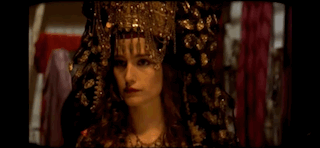
~The last Haseki Sultan~
Rabia was the consort of Ahmed II. Her date of birth and origin are unknown.On 7th October 1692, Rabia gave birth to twin şehzades Selim and Ibrahim. Sultan Ahmed II ordered huge festivales. On 14th November 1692, the Sultan rewarded Rabia with the title of Haseki Sultan and he made her wear a crown. Thus, Rabia became the last Haseki Sultan of the Ottoman Empire. Sadly, Şehzade Selim passed away on 15th May 1693. In July 1693, the mansion of late Kara Ibrahim Pasha, grand vizier during the reign of Mehmed IV, was donated and assigned to Rabia. On 23th October 1694, Rabia gave birth to her only daughter, Asiye. Ahmed II granted Rabia lands in Aleppo. Property of Ahmed's sister, Gevherhan Sultan who passed away in September 1694, was given to Asiye Sultan. It is understood from the documents,that late Gevherhan Sultan was in debt, especially the debt she owed Rabia was high. After Ahmed II passed away in Februar 1695, Rabia and Asiye left Edirne and moved to Istanbul to the Old Palace. Rabia's son Ibrahim stayed in Edirne, in care of the new Valide Sultan , Emetullah Rabia Gülnuş. Unfortunatelly, Asiye passed away on 9th December 1695. Nothing else is known about Rabia's life in the Old Palace. We can only imagine how devasted she was after loosing two of her childern, her master and beeing far away from her only living child. Rabia passed away on 14th January 1712. 370 kuruş ( ca. 4320 $) were spent on her funeral. Rabia rests next to Ahmed II, in Sultan Süleyman's tomb
youtube
10 notes
·
View notes
Text
HUMAN LIFE
1710 Galeb was born 25th August named Şehzade Süleyman, to parents Ahmed III Sultan of the Ottoman Empire and consort Mihrişah Kadın. ( a.k.a Jeannette de Bazory )
1730 Ahmed III reign as Sultan of the Ottoman Empire ended after an insurrection initially involving 17 Janissaries, citizens and military, led by Patrona Halil on 20th September.
Fearing for her eldest son’s life, Jeannette de Bazory ( Galeb’s mother ) persuaded Galeb to hide on a ship leaving Constantinople and fake his death. He reluctantly agreed.
Her fears were proven correct and she was murdered by the Janissaries soon after.
The captain of the ship Galeb escaped on, Ohrili Fahri, decided he was a good worker and adopted him into his family.
He soon joined his adoptive family in business as a diamond merchant.
After receiving news that his mother had died, Süleyman abandoned his name, dawning the name of ’ Galeb Bazory ’ in honour of his mother and adopted a detached persona.
1733 Galeb would begin sailing the world in search of other business opportunities.
1740 Galeb met Jean Baptiste Tavernier in Cadiz, Spain.
1743 After the two became close, Galeb would open up to Jean Baptiste Tavernier who would cement his interest in turning him and later embrace Galeb.
UNLIFE
1745 With his sire wanting him to retake his throne or control it from the shadows, Galeb refuses and abandons his family and sire but continues to sporadically keep in contact with him.
1794 After travelling the world and continuing his business ventures, Galeb travelled to Andorra where he met and fell in love with Agueda Hernández.
1796 He’d admit to Agueda that he was a vampire.
1805 Agueda admits her dream of having a child and growing old with Galeb, realising he can’t give her what she wants and what he believes she deserves, he flees the country.
1806 Galeb meets a man named James Underwood, a sugar trader, who he begins to have feelings for.
1807 James and his wife have a son who they named Berel, James’ wife dies shortly after the birth.
1814 In contact with his sire, Jean Baptiste Tavernier, Galeb agrees to settle in New York.
1829 James Underwood dies, Galeb takes on Berel as his son.
1833 Berel asks Galeb to go into business with him.
1835 Berel questions why Galeb never ages, Galeb admits he’s a vampire and Berel begs him to turn him.
1869 After many years of putting it off, Galeb reluctantly embraces Berel.
1879 Disgusted by Berel’s behaviour as an immortal, Galeb abandons his childe.
8 notes
·
View notes
Text
The Most Beautiful Thing In The World Is Love - Chapter 3.
Book: Dracula A Love Story
Pairing: Mehmed x MC
Characters: Şehzade Mehmed, Lale Hatun, Ambassador.

More than a week had passed since the departure of the imperial army from Edirne, and Alexandra,escorted by two sipahis, had soon followed after them, leaving Lale alone.
The young lady was now restless. Not only had the war taken all of her loved ones away from her, but it also left the palace under the supervision of her Uncle’s grand vizier, Candarli Halil Pasha, to whom the mysterious ambassador seemed to whisper his every wish.
While pondering upon all this, Lale shivered. Her grip on her silken emerald green shawl tightened as she walked down one of the many paths of the gardens, while her mind went back to the fateful letter that Nuray never got to send her.
Despite all logic, she had the intuition that all these unfortunate events and the arrival of the Ambassador were not a coincidence. And everything she had learned from her Uncle’s physician corroborated her theory; after all, even in the past many dreadful events unfolded upon his arrival: Mehmed’s fall, Şehzade Ahmed’s death, Hüma’s condition, the death of her second cousin, then Hüma’s; and lastly, her own mother.
According to Shirvani, demons were dancing and screaming in Hüma’s house on the night Mehmed was cured, and coincidentally, the Ambassador excused himself and did not attend any meeting with the Sultan.
If one thing was certain for Lale, it was that he was the one who summoned those dark forces. And he was the same man that had stalked Mehmed and herself while at the caravanserail, and the words he had spoken back then still echoed in Lale’s mind. He had threatened Mehmed’s position as future ruler by mentioning a potential brother.
Now he was taking advantage of the Sultan’s absence to pressure the inhabitants of the palace, and imposing his vision on the Grand Vizier. Alexandra had been discovered and threatened because of him; what would be next?
Dread filled her stomach as she stopped next to the wooden bench facing the small pound. The young lady had planned to work on the zaviye, but her gloomy thoughts had disheartened her.
She sat down silently and contemplated the gardens for a while, unable to shake off the feeling that something terrible was about to happen. These gardens had become her safe place, where she could hide away from the world and meditate on the serious topics that had been burdening her mind lately. But also, they reminded her of their own designer, of him.
The sound of hurried footsteps made Lale turn around, only to see the breathless messenger stopping a few steps away from the kiosk, and bowing deeply.
“Lale Hatun” he started as he tried to catch his breath. While he was doing so, the young woman noticed the golden tube he was holding firmly; it only meant one thing: this came from the battlefield, and it was sent by someone powerful, urgently.
Her blood ran cold.
“What is it?” she asked while trying to maintain some countenance. “What news of the battlefield?”
“The battle started during the night, my Lady” the man replied while keeping his gaze to the ground. “This letter was sent urgently to you as the first wave was ending.” He extended the golden tube to her, and bowed respectfully once she took it.
Lale could hear her heart pumping in her ears as she looked at the letter and barely heard herself thank the man, before focusing on the letter.
With trembling hands, she opened the tube and examined the seal on the letter before hastily breaking it as she recognised its sender.
There was no introduction, nor salutations, only fourteen lines were elegantly written.
Lale’s eyes widened as she recognised the style of Mehmed’s writing; similar to another one that she received not so long ago.
“O my love! Only if my heart’s pain made my tears spill over for you, would the secrets hidden in me be disclosed to you?
You are seated on the Throne of Beauty ;I am trampled on this road of Earth. O my Solomon! How can a mere ant explain its state to you?
O light of my dark room! Look at this candle weep, at your gathering, see how it goes mad to burn so fine for you.
O my love with the face of the bright moon! It is plain as day that in the anguish of love I am as true as the light of morning to you.
O my love! Somehow, yesterday you stayed the torments my rivals wreaked on me. Did my cries and wails, then, move you?
O dear friend! I cannot explain the wound of separation. So let my torn collar and wounded breast show you how my heart has been torn to pieces for you.
O my love! Don’t bring Avni’s heart and eyes to ruin with your torments. For the great sea of my eyes presents pearls to you, and from the blood-filled mine of my heart are drawn out ruby garnets for you.”
Lale’s fingers trembled as she held the thin paper, and a tear silently rolled down her cheek while she read the last line of the poem. She suddenly felt out of breath, and realised that she had forgotten to breathe altogether. Without taking her eyes off the paper, she sat down on the bench and tried to regain control over her racing heart. Luckily for her, the messenger never raised his eyes to her, and kept staring at the ground; unaware of her torment.
In his poem, he was speaking of her staying the torments his rivals wreaked on him; what rivals could he be talking about? Lale couldn’t recall when she displayed her attention to anyone else than him; or had her Uncle matured his own thoughts about her wedding?
Was this Mehmed’s answer for the talismanic shirt she secretly gave him? And if so, was he wearing it during the battle?
She couldn’t help but feel all of his anxiety, and then joy through his lines and now she could only pray to the Almighty that they would return soon to Edirne safe and sound. That he would come back to her unharmed. She cleared her throat and stood up before addressing herself to the messenger, still bowing behind her.
“What about my family? Are they safe?” The man could feel her piercing gaze on him as she spoke and tried to weigh his words carefully.
“Our Sultan led the battle wisely and remained out of harm; Şehzade Mehmed…” he paused, unsure of what to say. But that short pause filled Lale with dread and she urged him to speak, immediately.
“Our Şehzade fell into an ambush; luckily he wasn’t alone and fought alongside Aslan and the Prince Vlad to find his way back to the camp. Our Sultan was grateful for them keeping the Şehzade safe. And then his Highness went back to his tent, only to return with this very letter and commanded me to ride immediately to Edirne.”
The young lady nodded, thoughtful.
“You shall rest here for a bit and depart in a few hours. I will entrust you with a reply before your departure. You may take your leave now.” She returned her attention to the letter as the man retreated, and sat back on the bench, deep in thoughts.
She only returned to her room at sunset and crossed paths with Shahi Hatun who, filled with exhaustion, had come back from Mehmed’s wetnurse’s chambers. Not wishing to leave the sickened woman alone, and to relieve her own wetnurse, Lale offered to visit her for a moment.
But as she reached Daye Hatun’s chamber, she overheard a muffled conversation that sent shivers down her spine.
“Why am I here? I have business with your ward. It’s unfortunate that he left before my arrival… But I'll definitely wait for him.”
“No…”Lale whispered with dread without realising it, then stepped away from the door, but a moment too late, revealing the ominous form of the Ambassador.
“Lale Hatun… Good evening.”
---
Notes:
Poem from Fatih Sultan Mehmed, under the pen name of Avnî.
Here's an audio of said poem in Ottoman Turkish -> poem
12 notes
·
View notes
Text
Tarihte Bugün Sokullu Mehmet Paşa'nın şehadeti
Hıristiyan adı Bayo (Bayiça) olup 1505’te Bosna’nın Vişegrad kazasının Rudo nahiyesinin Sokoloviç (Şahinoğlu) köyünde dünyaya geldi.
Sadrazamlığı döneminde paşa ile konuşan İtalyan elçileri kendisinin Sırp despotlarının soyundan geldiğini söylediğini ifade ederler. Ayrıca Boşnak asıllı olduğu da belirtilir. Boyunun uzunluğu sebebiyle Osmanlı tarihlerinde “Tavîl” veya “Uzun” lakaplarıyla anılır.
Kanûnî Sultan Süleyman’ın hükümdarlığının ilk yıllarında Bosna’dan devşirme toplamakla görevlendirilen Yayabaşı Yeşilce Mehmed Bey tarafından beğenilip saraya alınmak üzere devşirme yazıldı.
Kanûnî Sultan Süleyman 1 Mayıs 1566 son seferine çıkarken Sadrazam Sokullu Mehmed Paşa da yanındaydı.
Sokullu Mehmed Paşa 7 Ağustos 1566’da başlayan Sigetvar Kalesi muhasarası işini üstlendi.
Padişahın rahatsızlığı dolayısıyla yaklaşık bir ay süren Sigetvar kuşatmasının bütün sorumluluğu onun üstünde kaldı. Birçok gecesini siperde askerlerle birlikte geçirdi, hatta bir defasında hayatı sır kâtibi Feridun Ahmed Bey tarafından son anda kurtarıldı. Nihayet 5 Eylül’de Osmanlı askerleri kale bedenine açılan bir gedikten içeri girmeye başladı. Müdafaa imkânının kalmadığını gören kale kumandanı Miklós Zrínyi iç kaleye çekildi. Bunun üzerine iç kale kuşatıldı ve surları ateşe verildi.
Sigetvar tamamen düşmek üzere iken 6-7 Eylül gecesi Kanûnî Sultan Süleyman vefat etti. Böyle bir durumda padişahın ölümünün asker arasında duyulması bir aylık çabayı boşa çıkarabilirdi. Sokullu Mehmed Paşa, padişahın ölümünden haberdar olanlara bunun bir sır olarak saklanmasını emretti. 7 Eylül’de Zrínyi’nin huruç hareketini püskürten Osmanlı askerleri kısa sürede iç kaleyi de ele geçirdiler.
Sokullu Mehmed Paşa, hemen fetihnâmeyle birlikte babasının öldüğünü belirten bir mektubu Kütahya’daki Şehzade Selim’e gönderdi. Bundan sonra padişah hayattaymış gibi işleri yürüttü. Şehzade Selim gelinceye kadar üç hafta bu sırrı sakladı.
Padişahın vefatını Belgrad’a yaklaşınca duyurdu ve askeri de etkileyici sözleriyle teskin etti. Bu tehlikeli durumun izlediği dikkatli siyasetle ve aldığı tedbirlerle atlatılmasını sağladı.
Osmanlı kaynaklarının bazılarında onun tarihe meraklı olduğu ve tıpkı Murad Hudâvendigâr gibi şehid olmayı arzuladığı ifade edilir. Sırp ve Boşnak kaynaklarında kendisi hakkında halk söylence ve türkülerine kadar yansıyan hikâyelere yer verilir.
Devlet idaresinde sıkıntılar içerisinde iken bir gün konağında ikindi divanına gelen bir derviş Sokullu Mehmed Paşa’ya arzuhal verecekmiş gibi yapıp koynundan bir hançer çıkararak kalbine sapladı.
Ağır yaralanan yaşlı sadrazam kısa bir süre sonra öldü (20 Şâban 987 / 12 Ekim 1579).
📷 Sokullu Mehmet Paşa'nın yağlı boya portresi Soprintendenza alle Galleria Floransa
Erhan Afyoncu TDV İslam Ansiklopedisi

0 notes
Photo

Abdülmecid Efendi Şeyh Sivasi
On altıncı asrın sonlarıyla on yedinci asrın birinci yarısında, İstanbul’un en büyük şöhretlerinden biri olan bir Halveti şeyhidir. Halveti tarikatının Şemsiye kolunun kurucusu olan Sivaslı Şemseddin Efendi’nin kardeşi, “Tuhfetül Mülûk” ve “Ziyaiyyei Cami” şaritû şeyhi Muharrem Efendi’nin oğlu ve meşhur şeyh Abdülahad Nurini’nin dayısı ve mürşididir. 1563 (H. 971) tarihinde Zile’de doğdu, ilk tahsilini babasından aldı ve yedi yaşında Kur’an’ı hafız oldu. Tahsil, sülük ve terbiyesini amcası Şemseddin Efendi’den tamamladı. Devrinin ünlü şeyhinin yanında 1596 (H. 1005) tarihinde Eğri seferine katıldı ve orada ölen Pirizade Veli Efendi’nin yerine Zile’deki Halveti dergahına şeyh oldu. 1604 (H. 1013) tarihinde Sivas’taki dergahın ikinci postnişini ve amcası Receb Efendi’nin ölümü üzerine de Sivas’taki Şemsî dergahına şeyh oldu.
İlim ve irfan yolundaki ününü duyan Üçüncü Mehmed tarafından bir hatt-ı hümayun ile İstanbul’a davet edildi; büyük şehirde ilk vaazını Ayasofya Camii’nde verdi ve kısa bir süre de bu mâbedin civarında bir evde oturdu. Daha sonra, kendisine intisap eden ve zamanın Reisülküttabı Lâ’li Efendi tarafından hediye edilen Eyyub Nişancaaındaki bahçeye yerleşti. Kızlarağası Mehmed Ağa’nın Çarşamba’da yaptırdığı Mehmed Ağa zaviyesine şeyh oldu Private Tour Istanbul.
Şeyhülislâm Sun’ullah Efendi tarafından cami haline getirilen Atpazarındaki Hüsambey Mescidi’ne de Cuma vaizi tayin edildi. İstanbul halkının vaazlarına gösterdiği büyük ilgi üzerine birkaç ay sonra Şehzade Camii’ne, bir süre sonra da Sultan Selim Camii’ne Cuma vaizi oldu. Sultan Selim civarında bir Sivaslı dergahı ile mescid yaptırdı. Bugün bu mescidin yeri Darü��şefakânın avlusuna katılmış bulunmaktadır; yıkılmış olan dergahtan da duvarı yarı çökmüş bir mezarlık kalmıştır. Sultanahmet Camii yapılırken “Temel şeyhi” olan Abdülmecid Efendi, temel taşı konulurken dua ettiği büyük mabedin halka açıldığı gün de ilk Cuma vaazını vermiş ve ölünceye kadar bu vazife üzerinde kalmıştır.
Üçüncü Mehmed, Birinci Ahmed, Birinci Mustafa, Genç Osman ve Dördüncü Murad devirlerinde ilim ve irfanı, fazilet ve kemaliyle büyük bir nüfuz ve hürmete mazhar olan bu din ve tasavvuf âlimi, mühim işlerde padişah ve devlet erkânı tarafından fikir ve reyine başvurulan bir sima idi. Kara yazıcı ve Uzun bölükbaşı isyanlarının bastırılmasında hükümete faydalı tavsiyelerde bulunmuştu. Dördüncü Murad’a Bağdat’ın İranlılardan geri alınacağını önceden bildiren kişi olmuş, padişah sefere çıkarken de Hazreti Ömer’in kılıcını beline kuşatmıştı.
Yüksek bir medeni cesaret sahibi idi; gördüğü yolsuzlukları açıkça söylemekten çekinmezdi. Birinci Ahmed’e sunduğu manzum bir şikâyetnamede, bu genç hükümdara memleketin ahval ve idaresinin bozukluğunu acı ve sert bir dille anlatmış, başarı için kendisine adalet ve meşveret tavsiye etmişti. Aşağıdaki satırlar, bu manzumeden alınmış beyitlerdir:
“Şeh-hü, mülkiyyeti kirişli, münşiba adem mi Bunu, dinli devlete layık nedir, ey fulûri, kinim.”
0 notes
Text

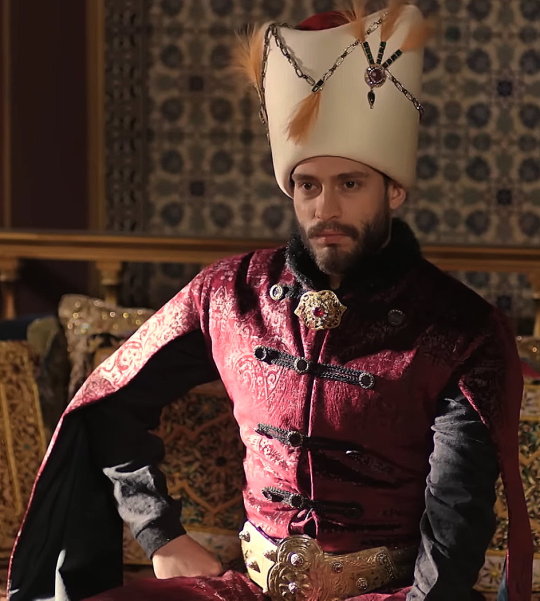
This red and black kaftan was first worn by Sultan Selim II in the thirty-sixth and final episode of the fourth season of Magnificent Century.
It was worn again by Sultan Ahmed I in the tenth episode of the first season of Magnificent Century: Kösem.
#Muhteşem Yüzyıl#Muhteşem Yüzyıl: Kösem#Magnificent Century#Magnificent Century Kösem#Magnificent Century Kosem#period drama#costume drama#historical drama#Selim II#Şehzade Selim#Sehzade Selim#Şehzade Selim (Son of Hürrem)#Ahmed I#Şehzade Ahmed#Sehzade Ahmed#Şehzade Ahmed (Son of Handan)#reused costumes#recycled costumes
20 notes
·
View notes
Link
Temsili bir görüntü. — Unsplash/DosyaTURBAT: Belucistan'ın Turbat kentinin Nasırabad bölgesindeki bir polis karakoluna kimliği belirsiz kişilerce düzenlenen saldırıda bir polis memuru ve dört işçi yaşamını yitirdi. Terör vakası olduğu anlaşıldı. Polise gore, Pencaplı işçilerden Muhammed Uzair, Baqar Ali, Şehbaz Ahmed ve Şehzad Ahmed olduğu açıklandı. Şehbaz ve Şehzad'ın kardeş olduğu da açıklandı. Vakada bir işçinin de yaralandığını belirten kolluk kuvvetleri, ölenlerin cenazelerinin Turbat Eğitim Hastanesi'ne kaldırıldığını bildirdi. Kapıcı Enformasyon Bakanı Jan Achakzai, ateşin terör vakası bulunduğunu doğruladı ve silahsız işçilere yönelik saldırıyı kınadı. Ayrıca geçici Başbakan Ali Mardan Khan Domki, eyalet İçişleri ve Kabile İşleri Bakanlığı'ndan bir rapor istedi. Ek olarak saldırının faillerinden hesap sorulacağının da sözünü verdi. Bu ay Turbat'ta, ölenler içinde Pencaplı işçilerin de bulunmuş olduğu bu şekilde bir vaka ikinci kez yaşanıyor. Bu ayın başlarında, Turbat kentinde silahlı kişilerin bir gecede kendilerini hedef alması sonucu minimum 6 işçi uykusunda öldürüldü ve iki işçi de yaralandı.Polise gore kimliği belirlenemeyen silahlı kişiler inşaat halindeki bir evde uyuyan işçileri hedef aldı.İkisi adam olan dört aile üyesinin de dahil olduğu ölenlerin kimlikleri Rizwan, Shehbaz, Waseem, Shafiq Ahmed, Mohammad Naeem ve Sikander olarak belirlendi.
0 notes
Text
Yandere husband Sultan Murad 4 and wife Baş Haseki Reader Sultan's childrens.
Şehzade Orhan

2. Rabia Sultan

3. Şehzade Selim

4. Cihannur Sultan
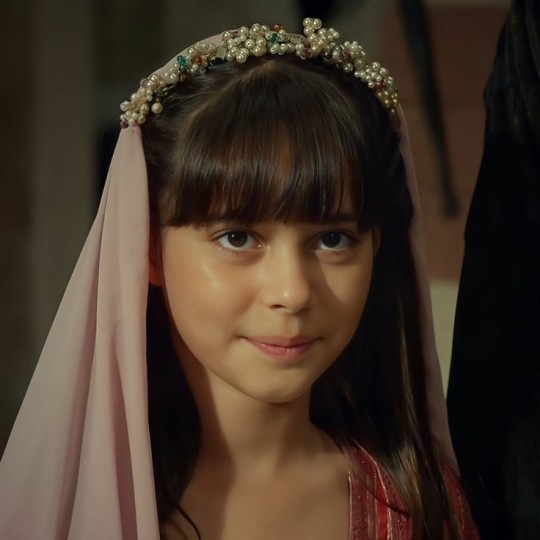
5. Şehzade Süleyman

6. Şehzade Mahmud

7. Şehzade Ahmed
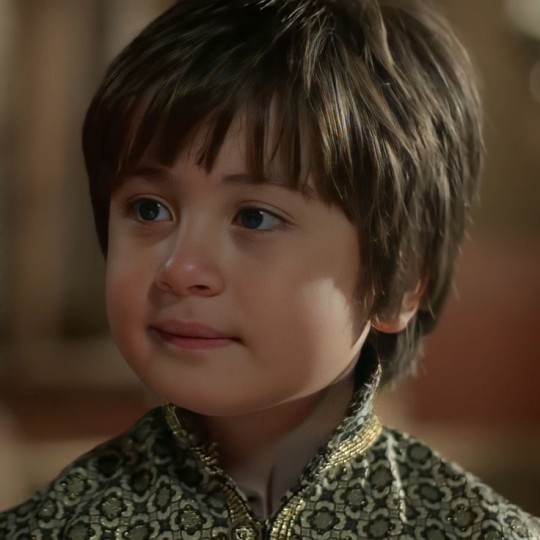
8. Hanzade Sultan
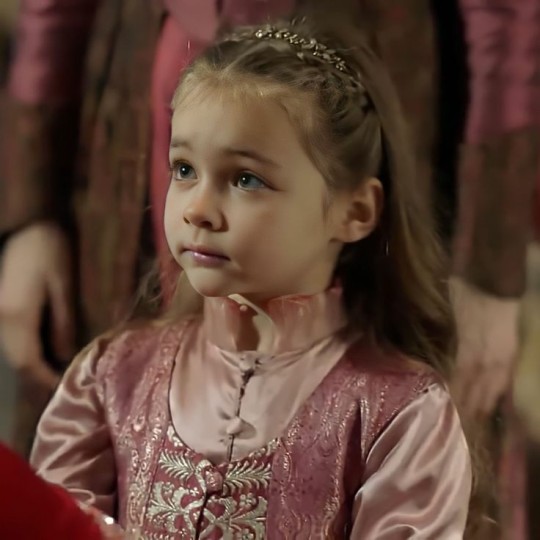
9. Mihrişah Sultan
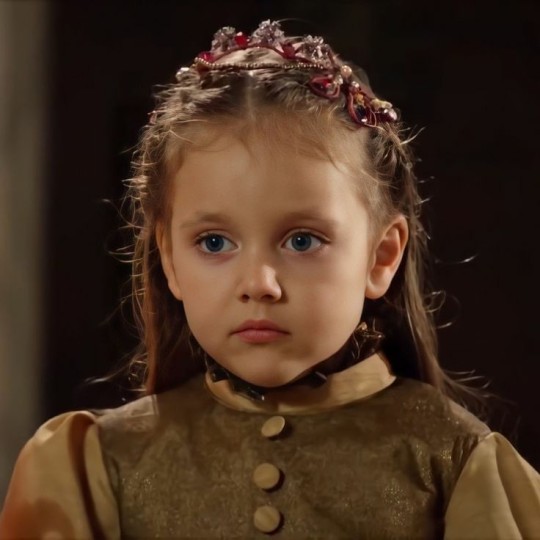
10. İsmihan Kaya Sultan
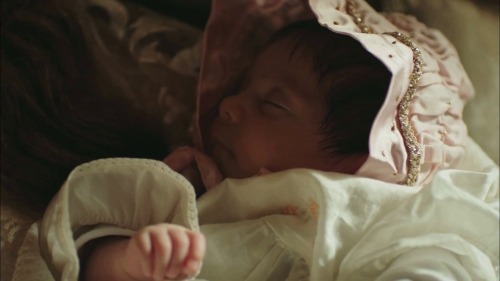
#yandere sultan murat iv x reader#yandere sultan murat iv#sultan murat iv x reader#yandere sultan 4 murat#yandere sultan murat 4#yandere sultan x reader#yandere ottoman empire#yandere magnificent century kosem
53 notes
·
View notes
Note
Is there any record of what Fatma's second husband, Kara Ahmed Paşa, was executed for? I keep running into roadblocks when I try to track it down (and, of course, accusations of it being a "plot" of Hürrem's, which feels like an old chestnut at this point).
According to Feridun Emecen:
The reason for the sudden execution of Ahmed Pasha is not clear. Celâlzâde Mustafa Çelebi, one of the contemporary sources, attributes the reason for the murder of Ahmed Pasha, whose justice and heroism he praises for his previous achievements, to his inability to bear the burden of viziership, his inability to handle affairs, his laxity in applying the laws, his neglect of counsel, his failure to take the necessary military measures in the Nakhchivan campaign, and thus the missed opportunity to conquer the whole of Iran up to Isfahan, and to the fact that he did not listen to useful words and listened to the words of worthless people. However, it is clear that these allegations put forward by Celalzade reflect the official view. The Habsburg envoy Busbeke, who also witnessed the events, stated in his letter dated July 14, 1556, that the sudden execution of the vizier surprised everyone and conveyed the rumours he had heard on this subject. He writes that some people believe that Ahmed Pasha was very attached to Şehzade Mustafa and secretly supported the rebellion of the Pseudo Mustafa and encouraged Şehzade Bayezid to take the throne, while others said that he was killed to pave the way for Rüstem Pasha to become Grand vizier again.
6 notes
·
View notes
Photo

Family of Mehmed I.
#mehmed i#emine hatun#emine#sehzade hatun#şehzade hatun#kumru hatun#kumru#murad ii#selçuk hatun#selçuk#küçük mustafa çelebi#kücük mutafa celebi#küçük mustafa#mahmud çelebi#mahmud celebi#ahmed#yusuf çelebi#yusuf celebi#hafsa#hafsa hatun#ayşe hatun#ayse hatun#ayşe#ayse#sultan#sultan hatun#ilaldi hatun#ilaldi#sitti hatun#sitti
21 notes
·
View notes